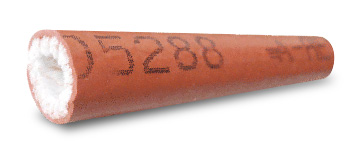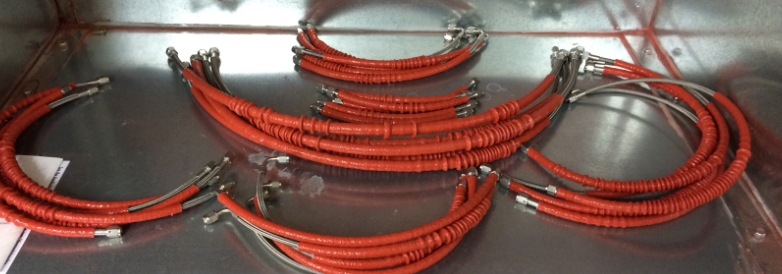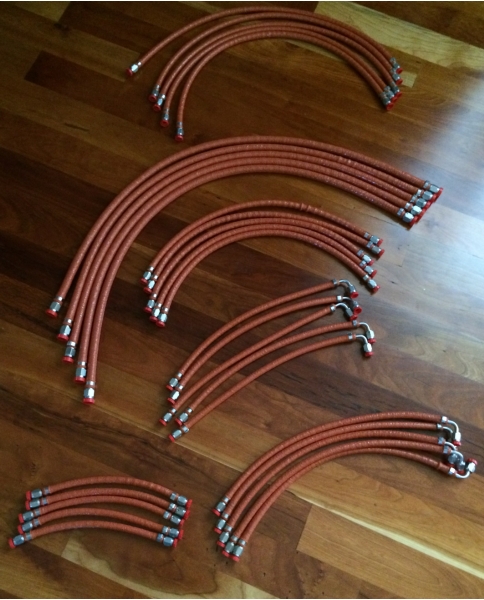Custom Experimental Aircraft Hose Assembly Order Form
 Aircraft Hoses are one of those items that you may not think much about. However, they are extremely important as they provide the lifeblood for your engine. In addition, a leaking hose, or a hose breached by fire can create a catastrophic result.
Aircraft Hoses are one of those items that you may not think much about. However, they are extremely important as they provide the lifeblood for your engine. In addition, a leaking hose, or a hose breached by fire can create a catastrophic result.
As experimental aircraft builders, we have the choice to use components in our aircraft that we deem safe as the manufacturer. We tend to avoid certified components, as you can often find superior quality in a non-certified product.
Here is where these custom hoses come in. With over 30 years of hose making experience, this hose making team has done the hard work for you. Utilizing the highest quality materials that will stand the test of time. In addition, each hose assembly is pressure tested prior to shipment. In addition, all hose assemblies have an industry leading 10 Year Warranty.
We ask that you plan your order for a shipping lead time of 5 business days, even though we often are able to ship quicker.
|
|
HOSES

These stainless braid conductive teflon hoses are extremely high quality and produced by a manufacturer that is well known in the Aerospace industry. These hoses are impervious to all types of fuel without having to worry about hose degredation. In addition, the -4, -6 and -8 hoses have a conductive liner manufactured into the hose which provides an electrical path to the fittings on the end. Essentially, the conductive teflon hose is able to dissipate static electricity buildup that can exist when fuel flows through a hose. This is
something that is normally only found on high end certified aircraft hoses. We feel it is important, because it adds an extra margin of safety to your aircraft, and also prevents static discharges from eventually creating little pinholes in the hose.
Please note that the -3 hoses are not conductive teflon, because there is not enough fluid flow through them to warrant the dissipation of static electricity. They are typically used as primer lines in aircraft or as brake lines on cars.
Finally, the hoses are covered on the outside with a stainless braid wire. The rated bursting pressure on these hoses is between 8,000 and 12,000 PSI depending on the diameter. Working pressure is between 2,000 and 3,000 PSI, and all hoses are tested to their rated working pressure before they leave the shop to give you peace of mind. This is something that not all manufacturers do, as it is time consuming. However, a hose failure can be catastrophic, so each and every one is checked before it leaves.
For planning purposes, the minimum recommended Bend Radius for these hoses are as follows:
-3 Hose (2 inches) / -4 Hose (2 inches) / -6 Hose (4 inches) / -8 Hose (5.25 inches)
FITTINGS
| Our fittings are another place that differentiate us from the competition. All -3 through -8 size fittings are built with stainless steel and Milspec Class 3 Rolled threads. Many other manufacturers utilize a lesser grade material that will corrode over time. Our -10 and -12 fittings are all built with aluminum stems and nuts, but retain the stainless crimp collar for the best combination of strength and weight. |
|
FIRESLEEVE
|
A finishing component to these hoses is their firesleeve. This firesleeve fits over the stainless hoses and is secured by stainless steel bands. It provides added protection for our firewall forward hoses against breach due to a fire. The firesleeve meets AS1072 Certification standards and is marked as such. What differentiates these from the competition is how tightly the firesleeve fits your hoses. While a lot of hose assemblers use a loose firesleeve (because it is easier to install), here the firesleeve is installed prior to crimping on the second fitting. This allows firesleeve to be used that fits very tightly to your hose and gives you a really nice looking installation. Firesleeve is an extremely integral safety component, and it is recommended for ALL hoses that are forward of the firewall. This will give you piece of mind that in the event of a fire in your engine compartment, your hoses will remain intact rather than pouring raw fuel onto the fire. Typically there is no reason to firesleeve hoses aft of the firewall. |
|||
HOSE MEASUREMENT
We make hose measuring easy. Measure from the very tip on one AN fitting to the tip of the other AN fitting in your aircraft. Everything else will be taken care of for you. Remember that if your fittings are not lined up perfectly, your hose will need a little extra length to it. This is also true when measuring for a 45 degree fitting as you need to account for the angle the fitting mates with the AN fitting. Look at the images below. The black lines indicate the flare to flare measurement.



HOSE CLOCKING
If you purchase a fuel hose that doesn't have a straight fitting on at least one end, we need to know how you would like the fittings clocked in reference to each other. For example, if you have two 90 degree fittings, we need to know in which orientation you would like them secured relative to each other.
Following is a textual description of the "clocking."
- Assume you are holding the fuel hose up in front of you.
- Assume the fitting furthest away is facing with the opening facing up.
- If the fitting closest to you has the opening facing up, it is assumed to be in the 12 o'clock position. If it is facing right, it is the 3 o'clock position, if the opening is down, 6 o'clock, and if it is left it is in the 9 o'clock position. You have a selection of clocking angles from 1-12. If you are purchasing one of these hoses, it is very important that you select a clocking angle, or it will delay the order of your hose.
FAQ
Here are some common questions and answers:
- Can I use these Hoses on Certified Aircraft?
Before purchasing any hose assemblies for your certified aircraft, talk to your IA about utilizing assemblies as "Owner Produced Parts." If you have any additional questions, please contact us for information. - How long will these hoses last?
These hoses have no defined service life. They need to be replaced "On Condition." They come with a 10 year warranty. This excludes hose damage caused by improper installation, kinking, or wear by not adequately securing a hose that exhibits damage from rubbing on something. - Do I need firesleeve Firewall Forward?
It is highly recommended as it protects the hose from breach during a fire in your cowling. - Can I run the hose through a grommet in the firewall?
Some people have run rubber and stainless hoses directly through a hole in the firewall. This can cause abrasion on the hose over time. Most importantly, it is a hole that flames could go through. The correct way to mount a hose through the firewall is to use a stainless AN fitting with a hose on the back end and a hose on the front end.







